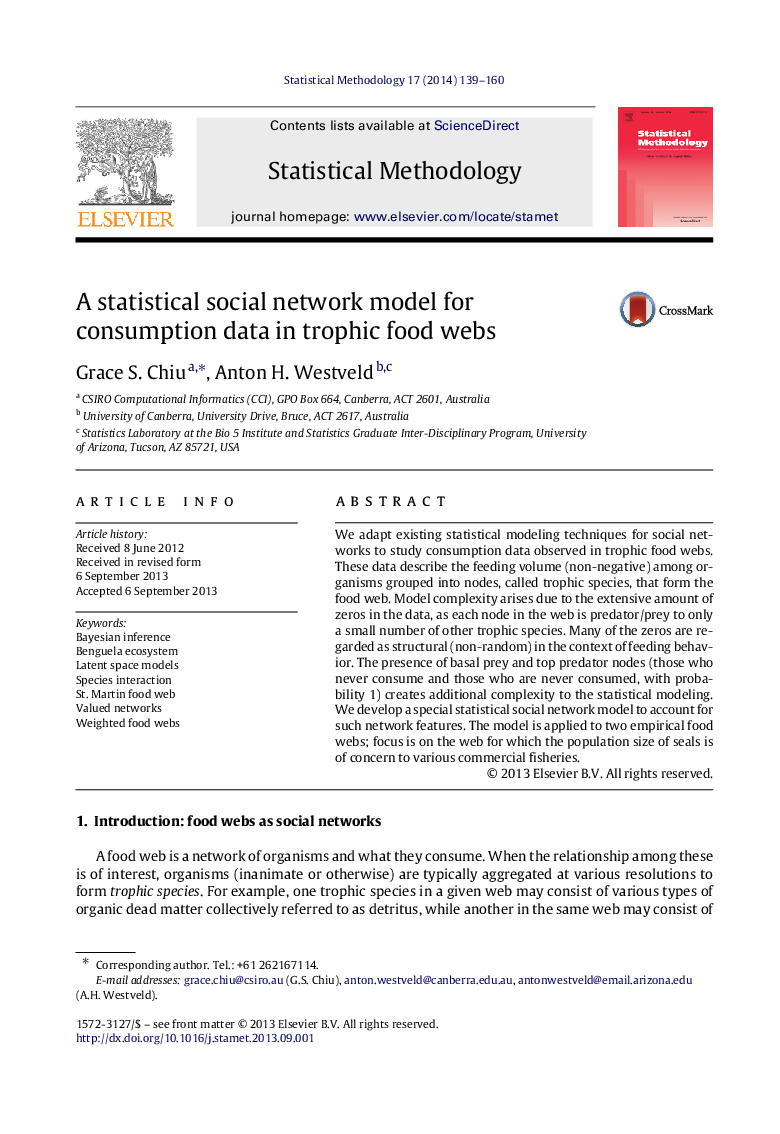| Article ID | Journal | Published Year | Pages | File Type |
|---|---|---|---|---|
| 1150884 | Statistical Methodology | 2014 | 22 Pages |
We adapt existing statistical modeling techniques for social networks to study consumption data observed in trophic food webs. These data describe the feeding volume (non-negative) among organisms grouped into nodes, called trophic species, that form the food web. Model complexity arises due to the extensive amount of zeros in the data, as each node in the web is predator/prey to only a small number of other trophic species. Many of the zeros are regarded as structural (non-random) in the context of feeding behavior. The presence of basal prey and top predator nodes (those who never consume and those who are never consumed, with probability 1) creates additional complexity to the statistical modeling. We develop a special statistical social network model to account for such network features. The model is applied to two empirical food webs; focus is on the web for which the population size of seals is of concern to various commercial fisheries.
